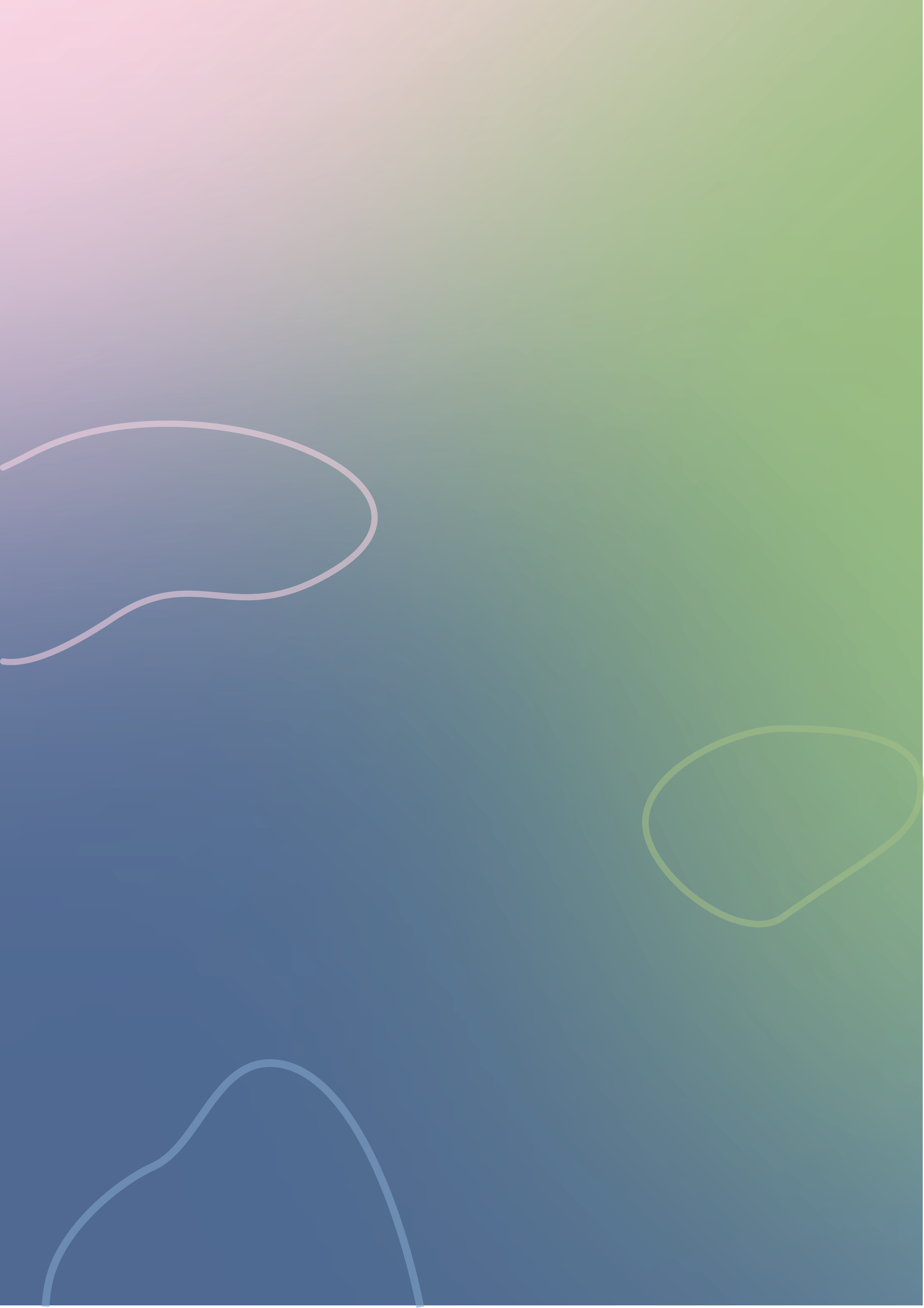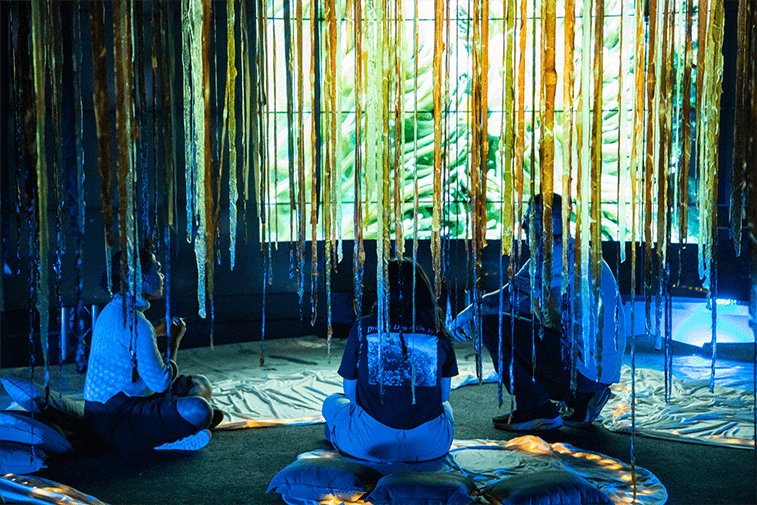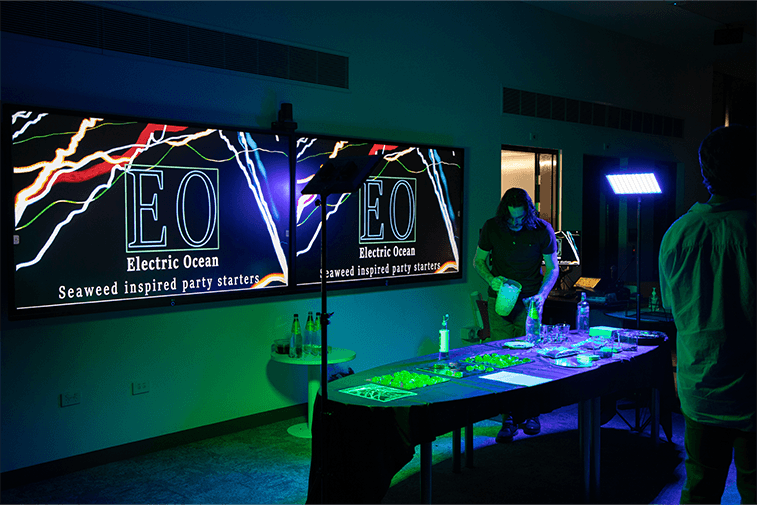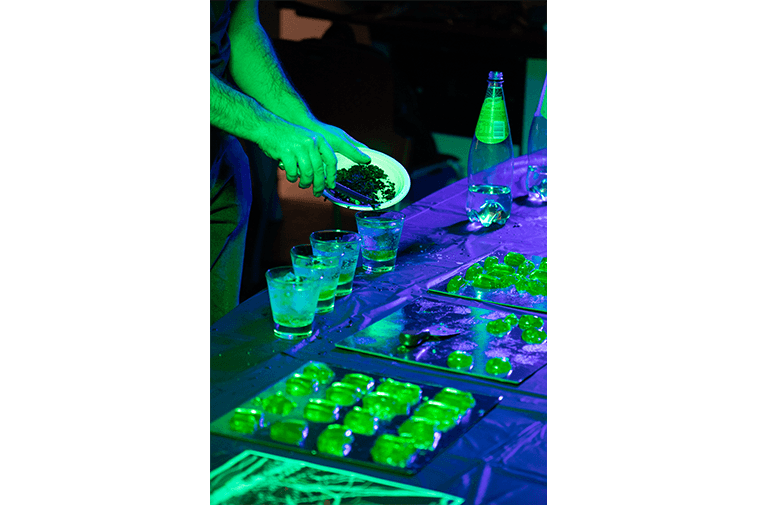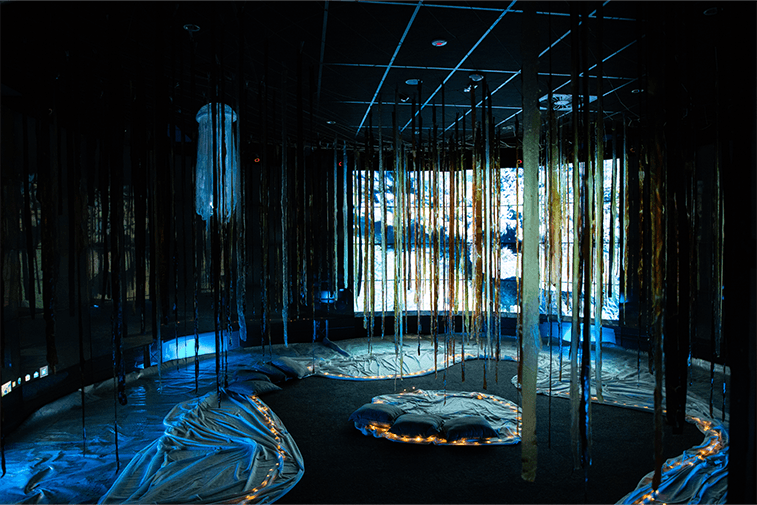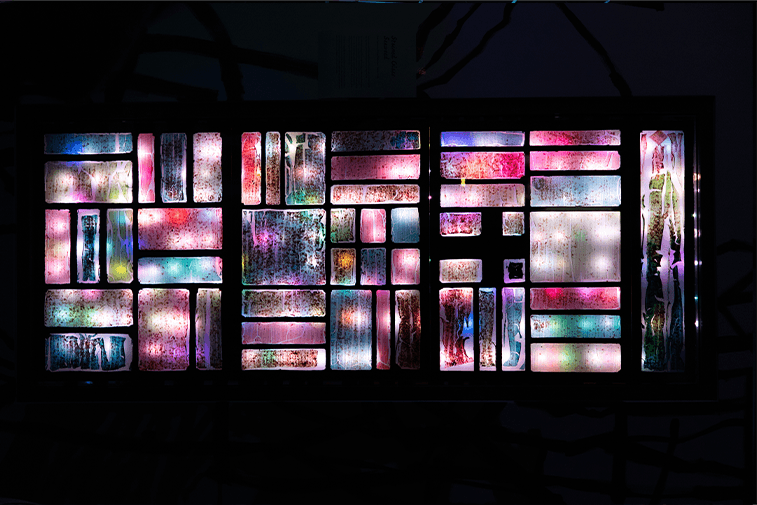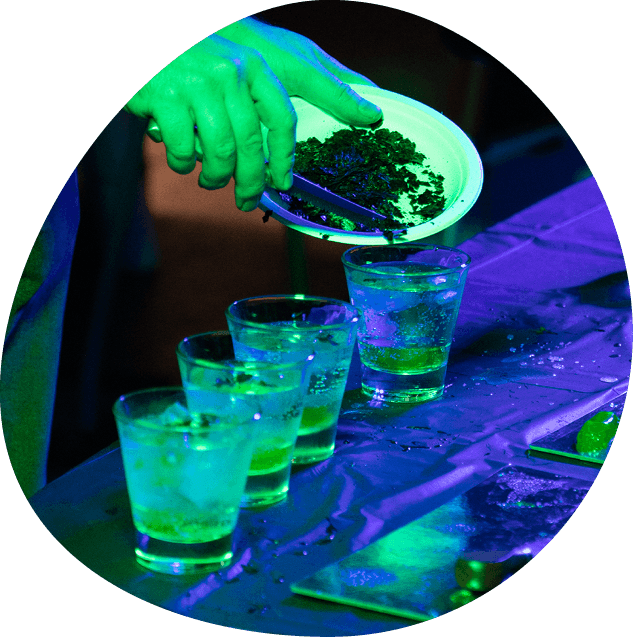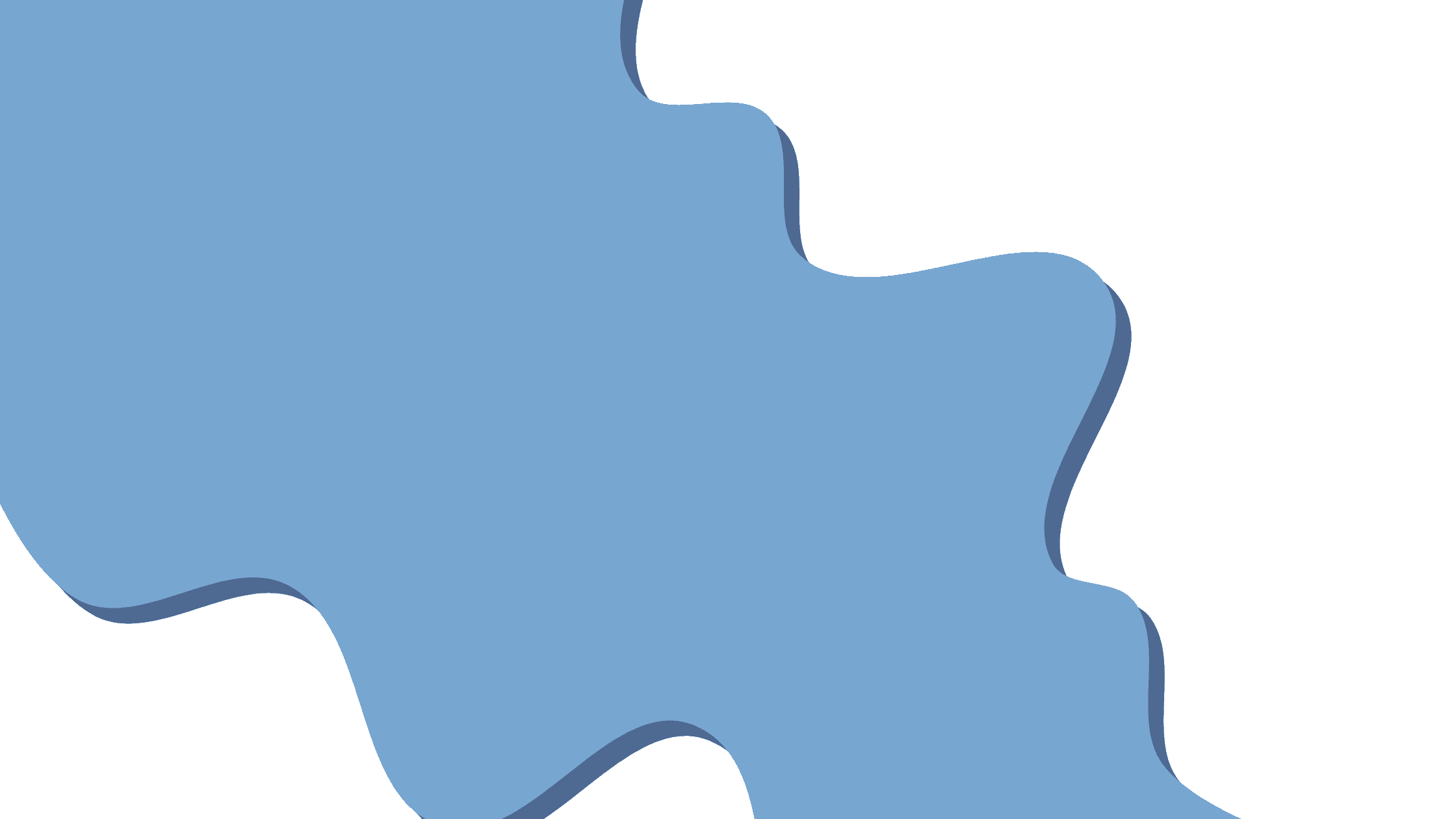
DES307 Interactive Technologies and Environments is a course offered in semester 1 and is the final capstone course for the Interactive Media major and minor. This course teaches advanced ideas and concepts in experience and interaction design, where students have the opportunity to work and build upon their existing skills to create interactive outcomes. Each student from the course produces a final major project either collaboratively or individually which, as of the next semester running, has connections with relevant SDGs and resulting in a portfolio ready prototype. The 2023 cohort approached this course by focusing on creating a range of individual interactive and immersive projects that explored a variety of themes and technologies and the cohort of 2022 however, took a different approach. They worked collaboratively to produce a group exhibition of inter-linked projects that resulted in one large interactive and immersive experience, the Seaweed Sensorium.
The Seaweed Sensorium was created by the 2022 cohort of DES307 and though there was no direct focus on SDGs they created an immersive and interactive exhibition which inadvertently emphasises the key values of SDG 14 Life Below Water “conserve and sustainably use the oceans, seas and marine resources for sustainable development.” The concept behind the exhibition was to highlight the importance of algae and supporting the environment. UniSc has a strong Sea-weed Research Centre which the group decided to connect with to explore from a design perspective as the Seaweed Group is primarily research focused, challenging themselves to find a new perspective of how to treat and present the importance of seaweed in our ecosystem with the exhibition being made up of four different projects, an algae record being played, a stained glass window, the sensorium and a drinks stand. 2022 DES307 students (now graduates) Clara Petterson and Sam Walsh who produced the event, spoke to us about their projects within the exhibition and experience with the course.
What was the concept behind the exhibition?
SW: The concept pretty much started from tossing up ideas, eventually it went to seaweed. Essentially the concept was the importance of algae.
CP: exploring supporting the environment, looking at how we could used design in presenting new ideas and things that are unexpected to support the theme we wanted to have.
What were your individual projects within the exhibition and how did you approach them?
SW: My project was seaweed cocktails, electric ocean was my branding. Cause I love creative writing I generally start with a name and move from there. I designed the branding first before knowing what it would be. I created an Under The Sea G&T: Gin, tonic and agar based seaweed infused green jello. The drink was blue so it was essentially like seaweed floating in the ocean. The project was a drinks stall with advertising which I filmed and did the music for. I was kind of front of house, giving people drinks and talking to them about the event.
CP: My project was the Stained Glass Window. I’m a UX designer so I don’t create anything in the real world so this was a real learning curve for me. I had two people with me (*get full names*). We decided to go with a stained glass window and the idea moved throughout the whole design process. We created a frame which we cut by hand and painted, and then created agar mixed with paint to create this texture like plastic. We would pour that onto the frame with baking paper underneath which created the foundation for the window but it had another component behind it. We had led strips which connected to a microbit and coded it to make different patterns which changed over time as they shone through to make it look like a stained glass window. I’ll briefly speak for the Moreton Bay group: They had an immersive hanging algae installation with a 360 video. They used agar powder and gulaman powder to create the hanging algae. They would pour it one line at a time and let it dry for days before hanging it up, they really wanted you to feel like you were in the algae.
CP: People would enter the event and go to Sams stand and he would welcom them before they went into the immersive experience, they would come out and look at my work and (camerons full name) record so it was this kind of fluid experience of the event that I think really made it work.
So you approached the interactive part of the course in the form of the whole event?
CP: Yeah it was about creating one cohesive experience
SW: and usage of space. We wanted it to move correctly, guide them through in a way that makes sense.
CP: In terms of design and creativity they [the projects] were quite different from each other which I think created quite an interesting friction in terms of creativity as we all had the same things, seaweed and agar powder but presented in such different ways.How did you find coming into this course?
CP: I’m really glad I did it. Mainly because its different making things with your hands and it was interesting to see how people interact with physical things, it is actually quite similar to how people interact with digital things so those translated quite well. To be able to understand interactive designs in the digital sense, its also really good to go back to the physical sense as well as thats where it all really came from.
SW: I studied UX too and i’m more of an entertainer. So I liked doing the course, it was a good, almost like a project management course. Clara and I joined together to pitch it the the PHD Seaweed Students and it allowed us to see a project from start to finish. It was stressful but good, a good experience overall.
How was working with the different perspective of the Seaweed Group?
CP: I think it was awesome, interdisciplinary design is where creativity lies. We had to do presentation about each of the works and how they’re important to the seaweed group. All the seaweed people came to the final event as well and we were all talking about interdisciplinary design where you connect design with other fields like academia, thats when new and exciting things come up. I personally find that design has started to challenge existing technology but design has a purpose, when you put that in a field that is quite foreign to design new and exciting ideas come up that you wouldn’t really think of before. Its also about trusting the design process, being ok with change and being ok with ambiguity because thats what drives the product in the end. Listening to people and listening to people not in your realm: We had the Seaweed academics come in and talk to us during the semester and it was really nice listening to what they find important and what they think should be in the exhibition. It kind of challenged my opinion and helped to shape the end result.
SW: Its different levels of connection as well, the seaweed people will connect in a more analytical sense but they’ll be able to give us really meaningful advice where as someone like me will connect almost purely on an emotional sense, I’ll get someone to feel something. Its good to be able to work with different types of people, you can get a lot better results in the end.
Gaining an insight into how Clara and Sam approached DES307 Interactive Technologies and Environments and to see the final outcome shows how this cohort produced a cohesive, immersive and interactive exhibition which invited you into an underwater world to explore the importance of algae and supporting the environment. Projects like this one allow designers and students at UniSc to create portfolio ready works that connect with the world around them. Using design to connect audiences with concepts of sustainability is a great way of making large scale ideas more approachable. The 2023 course produced a few projects that explored sustainable concepts such as ‘Interactive game’ and 'Deep Blue' which shows a completely different approach in methodology to the 2022 group but still maintaining cohesive undercurrents of sustainability. Current course coordinator Toby Gifford shared a bit more with how the course is moving forward and approaching the inclusion of SDGs into the core learning materials.
How is DES307 approaching the SDGs?
The design program at UniSC embeds SDGs throughout the program. DES307, the interactive media capstone course, is project based and so driven by student interests. In 2023 the course itself didn’t formally focus on SDGs, however several student projects embraced sustainability concepts, which is perhaps testimony to the embedding of SDGs in level 100 and 200 courses across the program. Like everything, DES307 is evolving, and next year will likely have some more formal focus on SDGs in the curriculum.
How does interactive art and design play a role in communicating sustainability?
Interactive art, and particularly immersive installation, can be a very effective medium for creating strong affective reactions, and generating empathy. Recreating the ‘awe’ of natural environments, and simultaneously provoking critical reflection on the impact of humanity of ecosystems, can help people tune in to the critical environmental issues we are facing.
Why is it important to encourage students to consider SDGs in their work?
Because, at the end of the day, nothing else really matters ...DES307 will be on offer in Semester 1 of 2024 at UniSc and is a great way to explore and learn about interactivity and sustainability within design.
We would like to thank graduates Clara Petterson and Sam Walsh and course coordinator Toby Gifford for their time and contribution.
